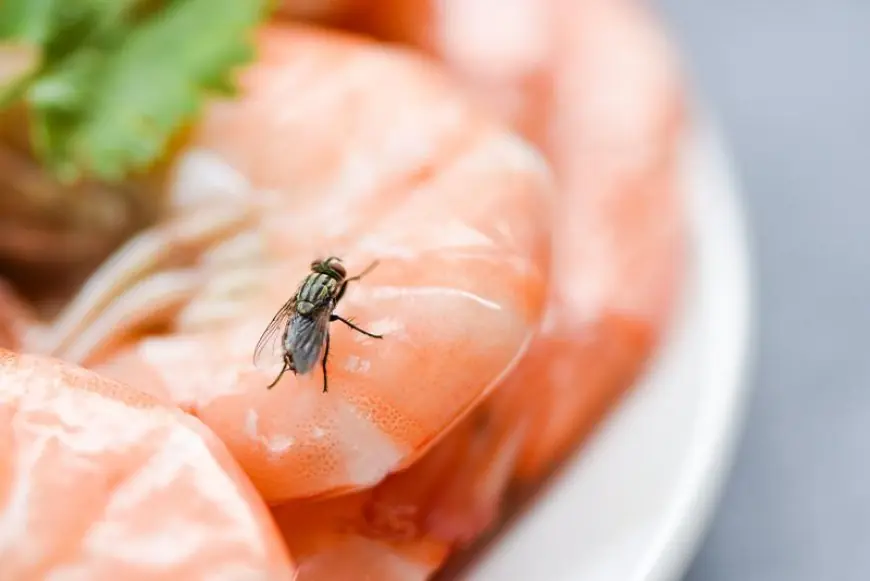How to Keep Your Food Safe from Insects: A Comprehensive Guide

Food safety is an essential concern for every household, restaurant, and food manufacturer. Among various food safety challenges, protecting food from insects is vital to ensure hygiene and prevent contamination. Insects such as flies, cockroaches, ants, and beetles can spread diseases, contaminate food, and lead to significant economic losses. This article provides detailed insights into how to keep your food safe from insects using Table Cloth Pra Mosca, storage techniques, and sustainable practices.
Why Insect Protection Is Crucial for Food Safety
Insects are not just a nuisance; they pose severe health risks. They can carry pathogens that lead to foodborne illnesses like salmonella, E. coli, and listeriosis. These illnesses can result in gastrointestinal discomfort, fever, or more severe health conditions. Moreover, the presence of insects in food compromises its quality, making it unfit for consumption.
Common Insects That Contaminate Food
1. Flies
- Flies are attracted to uncovered food, especially sweet or fermented items.
- They carry bacteria on their legs and mouthparts, contaminating food surfaces.
2. Cockroaches
- Cockroaches thrive in warm and damp environments.
- They are known carriers of allergens and disease-causing microbes.
3. Ants
- Ants are drawn to sugary and greasy food items.
- They can infiltrate food storage areas in large numbers.
4. Beetles and Weevils
- These insects target stored grains, flours, and cereals.
- Their infestation can ruin large quantities of stored food.
Strategies to Protect Food from Insects
1. Proper Food Storage
Proper storage is the first line of defense against insect contamination.
· Use Airtight Containers
Store dry foods such as cereals, grains, and spices in airtight containers to prevent access to insects.
· Refrigerate Perishable Items
Foods like fruits, vegetables, and dairy products should be stored in the refrigerator to deter insects.
· Check Packaging
Ensure that food packaging is intact when purchasing. Torn or damaged packaging may indicate an insect problem.
2. Maintain Cleanliness
A clean environment discourages insects from invading your space.
· Regular Cleaning
Wipe countertops, dining tables, and kitchen surfaces daily to remove food crumbs and spills.
· Dispose of Garbage Properly
Use tightly sealed garbage bins and dispose of waste regularly to prevent attracting insects.
· Seal Cracks and Gaps
Inspect and seal cracks in walls, windows, and doors where insects might enter.
3. Use Natural Repellents
Natural repellents can be effective in keeping insects at bay without the use of harmful chemicals.
· Lemon and Vinegar
Wipe surfaces with a mixture of lemon juice or vinegar to deter ants and cockroaches.
· Essential Oils
Oils like peppermint, lavender, and citronella can repel flies and other insects.
· Herbs and Spices
Bay leaves, cloves, and cinnamon can be placed in pantry corners to ward off pests.
Modern Tools and Technologies for Insect Control
Technological advancements provide more efficient methods to combat insects.
1. Insect Traps and Zappers
- Electric zappers are effective for flies and mosquitoes.
- Sticky traps can capture crawling insects like cockroaches.
2. Ultrasonic Repellents
- Ultrasonic devices emit high-frequency sounds that are inaudible to humans but repel insects.
3. Smart Food Storage Solutions
- Vacuum-sealed containers and advanced refrigerators with pest-proof technology offer enhanced food safety.
Sustainable Practices for Long-Term Insect Prevention
1. Integrated Pest Management (IPM)
IPM combines biological, cultural, and chemical methods to manage pests sustainably.
· Biological Controls
Introduce natural predators like spiders or ladybugs to control certain insect populations.
· Cultural Practices
Rotate storage practices and avoid keeping food near damp or warm areas.
· Minimal Chemical Use
Use pesticides sparingly and opt for eco-friendly options.
2. Composting Done Right
- Compost food waste away from the kitchen to prevent attracting insects.
- Cover compost bins securely to limit insect access.
Foods Prone to Insect Infestation and How to Protect Them
Table: Common Foods and Protection Tips
|
Food |
Insect Risks |
Protection Methods |
|
Grains & Cereals |
Beetles, Weevils |
Airtight containers, freeze grains briefly |
|
Fruits |
Flies, Ants |
Refrigeration, wash before consumption |
|
Sugary Foods |
Ants |
Store in sealed jars |
|
Meat & Dairy |
Flies, Cockroaches |
Refrigeration, clean preparation areas |
|
Spices |
Beetles, Weevils |
Store in cool, dry places |
How to Identify and Handle Infested Food
Signs of Infestation
- Small holes in packaging or food.
- Presence of live or dead insects.
- Clumps in dry foods, indicating webs or eggs.
Steps to Handle Infested Food
- Discard infested food items immediately.
- Clean the storage area thoroughly with soapy water.
- Inspect nearby food to ensure no further contamination.
Conclusion
Keeping food safe from insects is a fundamental aspect of food hygiene that requires a combination of preventive measures, modern technology, and sustainable practices. From proper storage techniques to the use of natural repellents and advanced tools, these strategies can effectively protect food from contamination. By maintaining cleanliness and monitoring for signs of infestation, you can ensure that your food remains fresh, safe, and healthy












